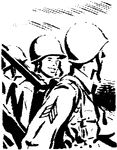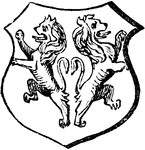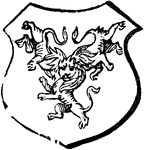
Lingula Antigua
The Lingula antigua is a little bivalve shell belonging at the bottom of the class Brachiopoda. The…
Garpikes Fish
The spotted Gar (Lepisosteus oculatus) is a primitive freshwater fish of the family Lepisosteidae, native…

Tapeworm
The cestodes or tapeworms (Toenia solium), are parasitic flatworms. The body is usually of great length…

Marine Worm
Marine worms, also known as Nereis, a worm with highly developed heads and many bristles arranged along…
Marine Worm
Marine worms, also known as Nereis, a worm with highly developed heads and many bristles arranged along…
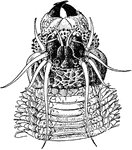
Marine Worm
Marine worms, also known as Nereis, a worm with highly developed heads and many bristles arranged along…
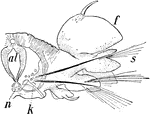
Marine Worm
Marine worms, also known as Nereis, a worm with highly developed heads and many bristles arranged along…
Marine Worm
Marine worms (Polynoe bevisetosa), a worm with highly developed heads and many bristles arranged along…

Nemetean
Band or Nemetean worms have been discovered in damp soil or in fresh-water streams. These are commonly…

Fairy-shrimp
The class of crustacea is divided into two sub-classes, Entomostraca and Malacostraca. The first, Entomostraca,…
Peripatus
Peripatus is a genus of Onychophora (Velvet worms). It is said to be a living fossil because it has…
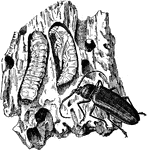
Beetle
Beetles are the group of insects with the largest number of known species. The general anatomy of beetles…

Scorpion
Scorpions are any arachnid of the order Scorpionida. Unlike the majority of arachnid species, scorpions…
Lancelet
Lancelet fish (Branchiostoma) is sometimes called amphioxus, the type of the class Leptocardii, is a…

Metamorphosis of a Mosquito
Mosquitoes are common flying insects in the family Culicidae that are found around the world. Mosquito…
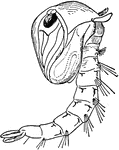
Metamorphosis of a Mosquito
Mosquitoes are common flying insects in the family Culicidae that are found around the world. The pupa…
Metamorphosis of a Flounder
Flounder have both eyes situated on one side of the head, they are not born this way. Their life involves…
Honey Bees
Bees are flying insects closely related to wasps and ants. Honey bees (or honeybees) are a subset of…
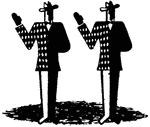
Two Men Taking Oath
An illustration of two men with their left hand behind his back and their right hands up.
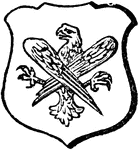
Eagle en Arrière
"Argent, an eagle proper en arrière. EN ARRIÈRE. An expression borrowed from the French,…
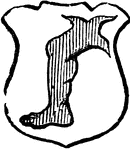
Leg Erased
"Argent, a leg erased at the midst of the thigh gules. ERASED. Signifies any thing torn or plucked off…
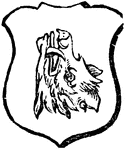
Boar's Head Erect
"Argent, a boar's head erect, and erased. ERECT. This is said of any animal or parts of animals, naturally…
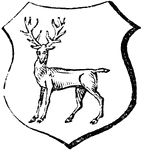
Stag at Gaze
"Argent, a stag at gaze proper. GAZE. An intent look. This is said of a deer standing still, and turning…
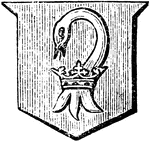
Swan Gorged
"A swan's head erased at the neck, ducally gorged or. GORGED. Any animals, particularly birds, that…
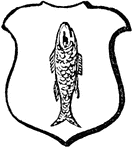
Haurient
"Argent, a salmon proper haurient. HAURIENT. A fish, in a perpendicular direction, with its head upwards."…

Unicorns Horned
"Azure, three unicorns' heads proper, erased, horned or. HORNED. This term is used to denote that the…

Girl Facing Away & Holding Hands Behind Back
An illustration of a girl facing away and holding hands behind her back.

Lion Rampant Regardant
"Lion rampant regardant. RAMPANT. Any beast in a fighting attitude. REGARDANT. An animal looking towards…
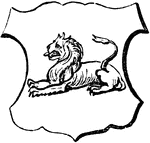
Lion Couchant
"Lion couchant. COUCHANT. The French word for lying down with the breast towards the earth, and the…
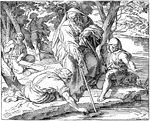
Elisha Causing Iron to Swim
"And the man of God said, Where fell it? And he shewed him the place. And he cut down a stick, and cast…
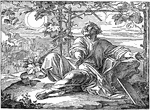
Jonah Sheltered by the Vine
"And the LORD God prepared a gourd, and made it to come up over Jonah, that it might be a shadow over…

Daniel Interpreting the King's Dream
"But there is a God in heaven that revealeth secrets, and maketh known to the king Nebuchadnezzar what…
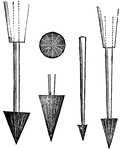
Egg Drills are Special Tools Used for Preparing and Blowing Eggs
"Figure 4 - egg-drills, different sizes. Steel implements with a sharp-pointed conical head of rasping…
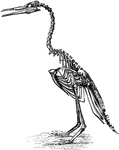
Restoration of Hesperornis regalis
"Hesperornis regalis, (a fossilized restoration) which stood about three feet high, had blunt teeth…
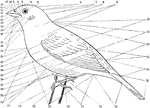
Topography of a Bird
"fig. 25 - Topography of a Bird. 1, forehead (frons). 2, lore. 3, circumocular region. 4, crown (vertex).…
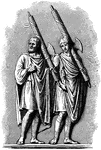
Roman Civil Servants
An illustration of two lictors, members of a special class of Roman civil servants. Lictors had special…

Lucius Cornelius Sulla Felix
A sculpture of the head of Lucius Cornelius Sulla. Lucius Felix. Lucius Cornelius Sulla Felix, or simply…
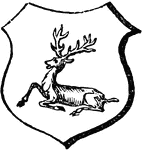
Stag Lodged
"LODGED. A stag sitting on the ground with its head erect, is said to be lodged." -Hall, 1862

Mitre
"MITRE. A sacerdotal ornament for the head, worn by Roman Catholic archbishops and bishops on solemn…
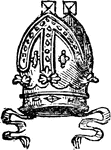
Mitre
"Mitre. A sacerdotal ornament for the head, worn by Roman Catholic archbishops and bishops on solemn…
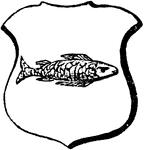
Naiant
"Argent, a salmon proper, naiant, its head towards the sinister side of the shield. NAIANT. A French…

Pheon
"Argent, a pheon proper. PHEON. A missile instrument with a barbed head, thrown from a cross bow." -Hall,…

Girl Scolding Young Child
An illustration of a young girl holding an apple behind her back while scolding a young child.
Sceptre with the Dove
"The sceptre with the dove is of gold, three feet seven inches long; the circumference of the handle…
Sceptre with the Cross
"The royal Sceptre with the Cross is of gold; the handle is plain, and the upper part wreathed; it is…
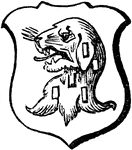
Talbot
"Argent, a talbot's head erased, semé of billets. TALBOT. A dog formerly used for hunting. It…
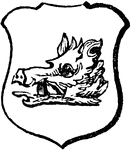
Boar Tusked
"Argent, a boar's head, erased proper, tusked gules. TUSKED. Any animal having tusks of a different…

Pelican Vulning
"Argent, a pelican's head, erased, vulning. VULNING. Any creature in the act of wounding itself." -Hall,…
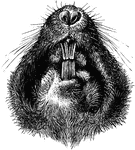
Plains Pocket Gopher
"Under Side of Head of Geomys bursarius, showing entrance of external cheek-pouches and sulcate superior…

Man Carrying Woman on Back Near Town
An illustration of a man carrying a woman on his back with a town in the background.
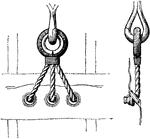
Glut
"Glut. Naut.: (b) A becket or thimble fixed on the after side of a topsail or course, near the head,…

The Bones of the Right Wing of a Duck
"Fig 27. - Bones of the right wing of a duck, Clangula islandica, A, shoulder, omos; B, elbow, ancon;…
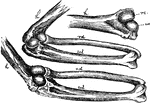
Mechanism of the Elbow-Joint
"Fig. 28. - Mechanism of elbow-joint. ..., where rc and uc show respectively the size, shape, and position…

Robin
"Robin: Upper parts slate-color, with a shade of olive. Head black, the eyelids and a spot before the…

Wood Thrush
"Wood Thrush. Upper parts, including the surface of the closed wings, tawny-brown, purest and deepest…
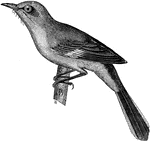
Mockingbird
"Mocking-Birds. Bill much shorter than head, scarcely curved as a whole, but with gently-curved commissure,…
